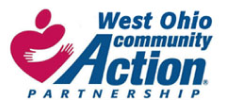FOR IMMEDIATE RELEASE
Contact: Carmillia Zion
419-227-2586
West Ohio Community Action Partnership Observes
Lead Poisoning Prevention Week
October 24-30, 2021
West Ohio Community Action Partnership (WOCAP) will recognize National Lead Poisoning Prevention Week, October 24-30, 2021. WOCAP will host and participate in outreach and educational activities designed to raise local awareness about the danger of lead exposure and poisoning, educate parents and communities on how to reduce exposure to lead in the environment to prevent its serious health effects, and teach parents about the importance of testing children for lead.
National Lead Poisoning Prevention Week is a partnership between the U.S. Department of Housing and Urban Development, the U.S. Environmental Protection Agency, and Centers for Disease Control and Prevention. The goal is to encourage organized, local community events, and empower families and other stakeholders to take action. “WOCAP is dedicated to eliminating lead hazards in our community. We provide lead hazard control programs to homeowners who live in pre-1978 homes and have children under the age of six and are low-income”, said Jackie Fox, CEO of WOCAP.
Outreach activities and events planned for the weeklong observance include social media outreach, distribution of Lead Safe Home booklets. There will be a landlord training in November.
About 3.3 million American households, including 2.1 million low-income households, have children under 6 years of age who live in homes with lead exposure hazards. Even relatively low levels of lead exposure can impair a child’s cognitive development. Children with blood lead levels can experience delayed growth and development, damage to the brain and nervous system, learning and behavior problems, and a host of other health-related problems. Public health actions are needed for these children. There is no safe blood lead level in children.
Lead can be found inside and outside the home, including in the water that travels through lead pipes or in the soil around the house. However, the most common source of exposure for children is from lead-based paint, which was used in many homes built before 1978. Adults and children can get lead into their bodies by breathing in lead dust (especially during activities such as renovations, repairs, or painting) or by swallowing lead dust that settles in food, food preparation surfaces, floors, window sills, eating paint chips, soil that contains lead, or other places.
Children can also become exposed to lead dust from adults’ jobs or hobbies and from some metal toys or toys painted with lead-based paint. Children are not exposed equally to lead, nor suffer its consequences in the same way. These disparities unduly burden minority families and low-income families and their communities.
The problem is largely preventable with increased testing, education, and a focus on prevention. Stakeholders can use the digital Partner Information Kit at: http://hud.gov/program_offices/healthy_homes/nlppw, to assist with building awareness and implementation at the local level. One of the most valuable resources to help residents and housing professionals nationwide is the National Lead Information Center, 1-800-424-LEAD [5323].
Please contact WOCAP at 419-227-2586 for more information.
